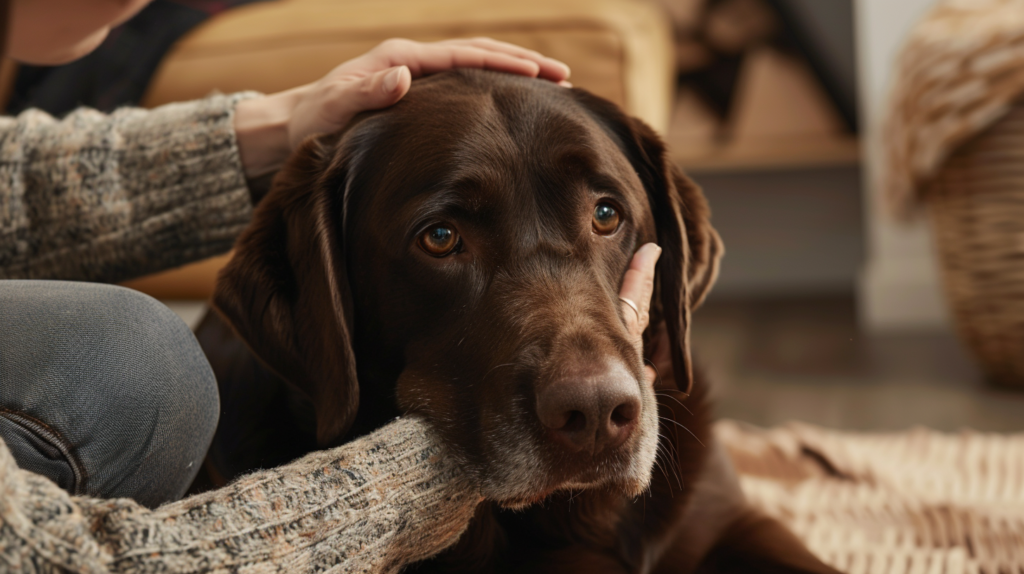Discover 8 powerful long-term shelter dog behavior changes that transform rescued pets. Expert insights on rehabilitation, bonding, and creating lasting happiness for shelter dogs.
Table of Contents
When you bring home a shelter dog, you’re not just gaining a pet—you’re embarking on a remarkable journey of transformation. Understanding long-term shelter dog behavior is crucial for creating a successful adoption experience that benefits both you and your four-legged companion. Many pet parents are surprised by the profound behavioral changes that occur weeks, months, and even years after bringing their rescued dog home.
The journey of a shelter dog’s behavioral evolution is both fascinating and heartwarming. These resilient animals often undergo significant psychological and emotional transformations as they adjust to their new lives, heal from past traumas, and develop deep bonds with their forever families. Research from the American Society for the Prevention of Cruelty to Animals (ASPCA) indicates that approximately 70% of shelter dogs show marked behavioral improvements within the first six months of adoption, with many continuing to evolve positively for years afterward.
This comprehensive guide explores eight powerful changes in long-term shelter dog behavior that every current and prospective pet owner should understand. From initial adjustment periods to the development of unshakeable loyalty, these insights will help you navigate the rewarding process of helping a rescue dog become their best self.
The Science Behind Shelter Dog Behavioral Changes

Before diving into specific behavioral transformations, it’s essential to understand the psychological foundation of why shelter dogs change so dramatically over time. Dogs are incredibly adaptable creatures with complex emotional lives, and their experiences in shelters—while often necessary—can create lasting impacts on their behavior and worldview.
Neuroplasticity in Canine Brains
Recent veterinary research has shown that dogs possess remarkable neuroplasticity, meaning their brains can form new neural pathways throughout their lives. This biological capability is particularly significant for shelter dogs, as it allows them to overcome traumatic experiences and develop new, healthier behavioral patterns in loving homes.
Dr. Patricia McConnell, a certified applied animal behaviorist, notes that “dogs who have experienced trauma or instability can literally rewire their brains given proper care, patience, and consistent positive experiences.” This neuroplasticity explains why many behavioral changes in shelter dogs occur gradually over extended periods rather than immediately after adoption.
The Role of Secure Attachment
Shelter dogs often develop what veterinary behaviorists call “secure attachment” with their new families—a psychological bond that provides the foundation for positive behavioral changes. This attachment process typically unfolds over several months and serves as the catalyst for many of the transformations discussed in this article.
The Gradual Emergence of True Personality

One of the most remarkable aspects of long-term shelter dog behavior is witnessing your dog’s authentic personality slowly emerge. Many shelter dogs initially present as withdrawn, overly compliant, or hypervigilant—survival behaviors developed during uncertain times. However, as months pass and trust develops, their genuine character begins to shine through.
From Survival Mode to Authentic Self
During the first few weeks in a new home, shelter dogs often remain in what behaviorists call “survival mode.” They may seem unusually well-behaved, rarely causing trouble or asserting preferences. This period, sometimes called the “honeymoon phase,” doesn’t reflect their true personality but rather their cautious approach to a new environment.
Timeline of Personality Emergence:
- Weeks 1-2: Extreme caution, minimal personality display
- Months 1-3: Gradual comfort, testing boundaries
- Months 3-6: Authentic personality begins emerging
- 6+ Months: Full personality expression and individual quirks
Case Study: Bella’s Transformation
Consider Bella, a 4-year-old mixed breed who spent eight months in a shelter system. During her first month with the Johnson family, she barely made a sound and seemed almost invisible in the household. By month three, she began showing interest in toys. Six months later, Bella revealed herself to be a playful, slightly mischievous dog who loved stealing socks and had an endearing habit of “talking” during meal preparation.
This transformation illustrates how long-term shelter dog behavior evolves as dogs feel secure enough to express their authentic selves.
2. Developing Unshakeable Loyalty and Gratitude

Perhaps no behavioral change is more profound than the deep loyalty that develops in shelter dogs over time. This isn’t the immediate attachment of a puppy to its first family, but rather a mature, thoughtful bond forged through the dog’s recognition of being saved and cherished.
The Gratitude Factor
While we can’t definitively say dogs experience gratitude in the human sense, their behavior often suggests a deep appreciation for their rescue. Many long-term shelter dog owners report that their pets seem to “know” they were saved, displaying behaviors that suggest awareness of their good fortune.
Signs of Deep Loyalty in Shelter Dogs:
- Intense focus on family members’ emotional states
- Protective behaviors without aggression
- Reluctance to leave family members’ sides
- Exceptional responsiveness to training and commands
- Comfort-seeking behaviors during family stress
The Science of Canine Loyalty
Research published in the journal “Animal Cognition” suggests that dogs who have experienced instability may form stronger attachment bonds when they finally find security. The study found that formerly homeless dogs showed elevated oxytocin levels (the “bonding hormone”) when interacting with their adoptive families compared to dogs who had never experienced displacement.
3. Overcoming Fear-Based Behaviors Through Patient Rehabilitation

Fear-based behaviors are common in shelter dogs, but the capacity for these animals to overcome their fears with consistent, patient care is truly remarkable. Long-term shelter dog behavior often shows dramatic improvements in confidence and trust over extended periods.
Common Fear-Based Behaviors in New Shelter Dogs
Understanding typical fear responses helps adopters recognize and address these behaviors effectively:
- Noise sensitivity: Excessive reaction to loud sounds
- Human avoidance: Hiding from unfamiliar people
- Resource guarding: Protective behavior around food or toys
- Separation anxiety: Distress when left alone
- Hypervigilance: Constant alertness and inability to relax
The Rehabilitation Timeline
Fear-based behavior modification in shelter dogs typically follows a predictable pattern:
Month 1-2: Identification of specific fears and triggers Month 3-4: Introduction of controlled exposure therapy Month 5-8: Gradual confidence building and desensitization Month 9-12: Significant reduction in fear responses Year 2+: Continued improvement and occasional breakthrough moments
Success Story: Max’s Journey from Fear to Confidence
Max, a German Shepherd mix, arrived at his forever home terrified of men due to previous abuse. His adopter, Sarah, worked with a professional trainer to implement a gradual desensitization program. After 18 months of patient work, Max not only accepted men but became a certified therapy dog, helping other fearful dogs in training programs.
This transformation demonstrates how long-term shelter dog behavior can completely reverse even severe trauma responses.
4. Enhanced Social Skills and Improved Interactions

Many shelter dogs struggle with social skills due to limited positive interactions during their time in temporary care. However, with consistent exposure to various social situations, these dogs often develop remarkable social intelligence and adaptability.
Developing Appropriate Play Behaviors
Shelter dogs may initially show poor play manners, either being too rough or too withdrawn. Over time, they learn appropriate play styles through interaction with other dogs, family members, and structured socialization opportunities.
Progressive Social Development Stages:
| Time Period | Social Behavior Changes |
| 0-1 Month | Cautious observation, minimal interaction |
| 1-3 Months | Beginning to engage, testing social boundaries |
| 3-6 Months | Learning household rules and pack dynamics |
| 6-12 Months | Developing confident, appropriate social responses |
| 12+ Months | Mastery of complex social situations |
Learning Human Communication Cues
One fascinating aspect of long-term shelter dog behavior is how these dogs often become exceptionally skilled at reading human emotions and body language. Having learned to carefully observe human behavior for survival, they often transfer this skill to understanding their new families’ needs and moods.
5. Physical Health Improvements Affecting Behavior

The connection between physical health and behavior in shelter dogs cannot be overstated. Many behavioral issues that seem psychological actually have underlying health components that improve dramatically with proper care over time.
Nutrition’s Impact on Behavior
Shelter dogs often arrive malnourished or have been eating low-quality food for extended periods. As their nutrition improves, owners frequently notice significant behavioral changes:
- Increased energy and playfulness
- Improved focus and trainability
- Reduced anxiety and stress behaviors
- Better sleep patterns and relaxation
- Enhanced immune function reducing illness-related irritability
Medical Issues and Behavioral Connections
Undiagnosed medical conditions can masquerade as behavioral problems. Common issues that improve with treatment include:
Dental Disease: Often causes irritability and food aggression Parasites: Can cause restlessness and digestive-related anxiety Skin Conditions: May lead to excessive scratching and agitation Joint Pain: Often manifests as reluctance to exercise or play
The Recovery Timeline for Health-Related Behaviors
Most health-related behavioral improvements in shelter dogs follow this general timeline:
- Weeks 1-4: Initial veterinary care and treatment begins
- Months 1-2: Nutritional improvements start affecting energy levels
- Months 2-4: Medical treatments show behavioral benefits
- Months 4-6: Full health recovery supports optimal behavior
- 6+ Months: Sustained good health enables continued behavioral growth
6. Development of Routine Comfort and House Training Mastery

House training and routine establishment represent some of the most practical yet significant changes in long-term shelter dog behavior. The journey from uncertainty to complete house training mastery often takes longer than with puppies but results in exceptionally reliable bathroom habits.
The Unique Challenges of Adult Shelter Dog House Training
Adult shelter dogs face distinct house training challenges:
- Previous inconsistent living situations
- Stress-related accidents during adjustment periods
- Possible punishment-based training creating fear around elimination
- Medical issues affecting bladder or bowel control
- Lack of established routine or schedule
The House Training Evolution Process
Successful house training in shelter dogs typically progresses through distinct phases:
Phase 1 (Weeks 1-4): Assessment and Establishment
- Identifying current level of house training knowledge
- Establishing consistent feeding and potty schedules
- Managing stress-related accidents without punishment
- Beginning to recognize individual elimination patterns
Phase 2 (Months 1-3): Building Consistency
- Gradual extension of time between potty breaks
- Development of reliable signals for needing to go outside
- Reduction in stress-related accidents as comfort increases
- Establishment of preferred elimination locations
Phase 3 (Months 3-6): Mastery and Reliability
- Near-perfect house training reliability
- Ability to “hold it” for appropriate periods
- Clear communication of bathroom needs
- Comfort with routine variations and new environments
Infographic: House Training Progress Markers
7. Emotional Regulation and Stress Management Skills

One of the most profound changes in long-term shelter dog behavior involves the development of emotional regulation skills. Dogs who initially struggled with anxiety, reactivity, or emotional volatility often become remarkably stable and emotionally intelligent with time and consistent care.
Understanding Canine Emotional Development
Dogs experience complex emotions similar to human toddlers, including joy, fear, anger, and anxiety. Shelter dogs often have underdeveloped emotional regulation skills due to chronic stress and uncertainty. However, secure environments allow these skills to flourish over time.
Signs of Improving Emotional Regulation:
- Faster recovery from startling events
- Ability to self-soothe during mild stress
- Reduced reactivity to triggers
- Better impulse control around food, toys, and excitement
- Increased tolerance for handling and grooming
- Calmer responses to environmental changes
The Role of Predictability in Emotional Development
Consistent routines and predictable responses from family members provide the foundation for emotional growth in shelter dogs. When dogs can predict what will happen next, their stress levels decrease dramatically, allowing emotional regulation skills to develop naturally.
Stress Signals to Recovery Behaviors
Early Adoption Stress Signals:
- Excessive panting or drooling
- Pacing or restlessness
- Loss of appetite
- Withdrawal or hiding
- Hypervigilance or startling easily
Long-Term Recovery Behaviors:
- Deep, relaxed sleep in family areas
- Playful and silly behaviors
- Appropriate response to excitement
- Seeking comfort from family members during stress
- Confident exploration of new environments
8. Cognitive Enhancement and Problem-Solving Abilities

The final powerful change in long-term shelter dog behavior involves cognitive development and problem-solving abilities. Dogs who initially seemed “shut down” or mentally absent often reveal remarkable intelligence and creativity as they heal and grow comfortable in their new environments.
The Impact of Enrichment on Cognitive Development
Mental stimulation plays a crucial role in cognitive development for shelter dogs. Many arrive with limited experience with toys, puzzles, or interactive games. As they’re introduced to various forms of mental enrichment, their problem-solving abilities often flourish dramatically.
Cognitive Enhancement Activities:
- Puzzle feeders and treat-dispensing toys
- Hide-and-seek games with treats or toys
- Basic to advanced obedience training
- Agility or obstacle course activities
- Scent work and nose games
- Interactive play with family members
Case Study: Luna’s Intellectual Awakening
Luna, a Border Collie mix, spent her first month in her new home sleeping most of the day and showing little interest in her surroundings. Her family worried she might have cognitive impairments. However, after introducing puzzle toys and training sessions, Luna’s intelligence became apparent. Within six months, she had learned over 30 commands, could solve complex puzzle feeders, and had even learned to open simple door latches. Her transformation from seemingly “dull” to brilliantly engaged demonstrates the profound cognitive changes possible in shelter dogs.
Measuring Cognitive Improvement
Families can track cognitive development in their shelter dogs by observing:
- Learning speed for new commands or tricks
- Problem-solving persistence and creativity
- Memory for people, places, and routines
- Ability to generalize learned behaviors to new situations
- Innovation in play or daily activities
- Responsiveness to environmental cues and changes
Creating an Environment for Positive Behavioral Changes
Understanding how to support positive long-term shelter dog behavior changes requires creating an environment that promotes healing, growth, and confidence. The following strategies help maximize the potential for positive transformation:
Essential Environmental Factors
Consistency and Routine: Establish predictable daily schedules for feeding, exercise, training, and bedtime. Consistency helps reduce anxiety and allows dogs to focus energy on positive growth rather than worry about what comes next.
Patient, Positive Training Methods: Use reward-based training techniques that build confidence rather than fear. Punishment-based methods can undo months of progress in traumatized dogs.
Gradual Exposure to New Experiences: Introduce new people, places, and situations slowly and positively. Rushing socialization can overwhelm shelter dogs and create setbacks.
Safe Spaces and Retreat Options: Provide quiet areas where your dog can retreat when feeling overwhelmed. This might be a crate, specific room, or comfortable bed in a low-traffic area.
Professional Support Options
Many families benefit from professional help during their shelter dog’s transition:
- Certified dog trainers specializing in rescue dogs
- Veterinary behaviorists for complex behavioral issues
- Dog socialization classes designed for adult dogs
- Pet therapy or counseling services for severe trauma cases
For more expert pet care tips and product recommendations, visit BlithePet.com — your trusted source for pet wellness.
FAQ long-term shelter dog behavior
How long does it take for a shelter dog to fully adjust to their new home?
Most shelter dogs require 3-6 months to fully adjust to their new homes, though some may need up to a year or more depending on their background. The “3-3-3 rule” suggests dogs need 3 days to decompress, 3 weeks to learn routines, and 3 months to fully settle in. However, long-term shelter dog behavior improvements can continue for years as the dog builds confidence and trust.
Why is my shelter dog more bonded to me than dogs who’ve been with families since puppyhood?
Shelter dogs often form exceptionally strong bonds because they have experienced loss and instability. This experience makes them particularly appreciative of security and love. Additionally, adult dogs have more mature emotional capabilities than puppies, allowing for deeper, more complex relationships with their adopters.
Can older shelter dogs still learn new behaviors and overcome past trauma?
Absolutely! Dogs maintain the ability to learn throughout their lives thanks to neuroplasticity. While progress may be slower than with younger dogs, older shelter dogs can overcome significant behavioral challenges and learn new skills. Patience, consistency, and positive reinforcement are key to success.
What should I do if my shelter dog seems to be regressing in their behavior?
Behavioral regression can occur due to stress, health issues, or environmental changes. First, consult your veterinarian to rule out medical causes. Then, return to basic training and routine establishment while identifying potential triggers. Professional help from a certified dog trainer or behaviorist may be beneficial for persistent issues.
How do I know if my shelter dog’s behavioral changes are normal or concerning?
Normal behavioral changes include gradual increases in confidence, playfulness, and bonding with family members. Concerning changes include sudden aggression, extreme fearfulness that doesn’t improve over time, or destructive behaviors that worsen rather than improve. When in doubt, consult with your veterinarian or a professional dog behaviorist.
Is it normal for shelter dogs to have “bad days” even after months of good behavior?
Yes, it’s completely normal for shelter dogs to have occasional difficult days, especially during their first year. Stress, changes in routine, or random triggers can temporarily affect behavior. The key is looking at overall trends rather than isolated incidents. If “bad days” become frequent or severe, professional evaluation may be helpful.
Conclusion
The journey of long-term shelter dog behavior transformation is one of the most rewarding experiences in pet ownership. From the gradual emergence of authentic personality to the development of unshakeable loyalty, these eight powerful changes demonstrate the resilience and adaptability of rescued dogs. Understanding that behavioral transformation takes time—often months or years—helps adopters maintain realistic expectations while celebrating incremental progress.
Every shelter dog brings unique challenges and gifts to their forever families. By providing consistent care, patient training, and unconditional love, adopters become witnesses to remarkable transformations that extend far beyond basic obedience. These dogs don’t just learn to live in homes; they become integral family members whose gratitude and loyalty often exceed that of dogs who have never known hardship.
The behavioral changes outlined in this guide represent not just individual success stories but testament to the power of second chances. When we understand and support the long-term behavioral evolution of shelter dogs, we unlock their full potential for joy, companionship, and mutual enrichment of our lives.
Remember that every dog’s journey is unique, and progress may not always be linear. Celebrating small victories, maintaining patience during challenging periods, and seeking professional support when needed are all part of the rewarding process of helping a shelter dog become their best self.
Have a similar experience with your pet? Share it in the comments below!







